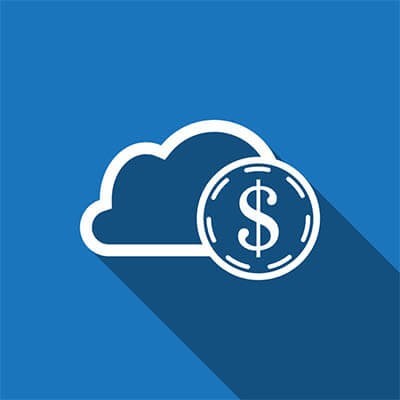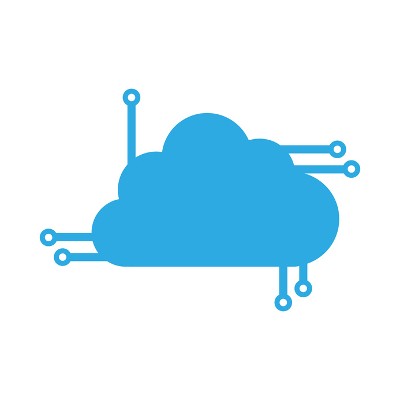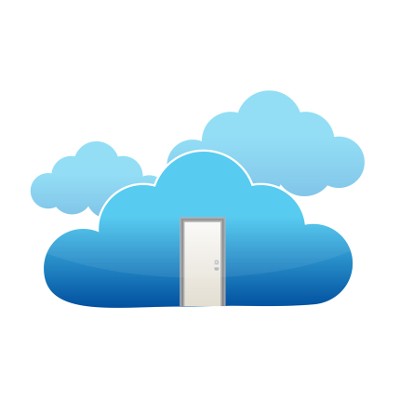The cloud has proven to be an extremely useful tool for the modern business. Not only does it provide anywhere-anytime access to applications, processing, storage, et al; it also delivers those products as a service, allowing you to budget for recurring costs rather than major upfront ones. This provides your organization with functional, supported, and secure computing environments that eliminate a lot of the support costs that traditional computing environments require. It sounds like a perfect scenario for small and large businesses alike, but things aren’t always what they seem, as a lot of cloud users have found that they have incurred several hidden costs by using cloud platforms. Today, we take a look at these hidden costs.
Info Advantage Blog
Profitability is less the measure of being able to turn a profit, and more the measure of how much profit you can make. For the successful small business, the integration of technology can dictate what kind of annual margins you are looking at. For the new company, however, it can be something even more critical: the difference between setting a course for success, or wallowing in failure. Today we analyze the cost difference between hosting your IT in-house, or choosing to host it in the cloud.
The first thing you’ll need to understand about migrating to the cloud is that it’s a much more involved process than simply performing a single software upgrade. Truth be told, properly migrating your data to the cloud involves a lot of prep work, and, as is the case with other kinds of moves like packing up your personal belongings to settle into a new house, the better prepared you are for the move, the smoother the transition will go and the less of a chance that you’ll lose something of value.
ITProPortal provides some insight into what migrating to the cloud properly takes: “It involves a complex infrastructure migration process. Good preparation is the key to success. Those organizing the migration process should ensure that all data is ready for the move and that the company network has the necessary capabilities to interact with the cloud.” This is a major reason why you’ll want a professional assessment of your IT infrastructure before deciding to move to the cloud.
Preparing your network for a move to the cloud involves a few considerations:
Sorting and Labeling Your Files
It’s important to take the time to determine what files are worth saving and moving, and what files aren’t so you’re not wasting time and resources moving and storing old files that your company no longer needs. This can be a time-consuming process, but the work will be worth it in the long run.
Preparing Your Network Infrastructure
Migrating to the cloud comes with demands on a network that may require major adjustments to be made to your IT infrastructure. When migrating to the cloud, there are two major additions to your network you’ll want to consider; setting up a direct Internet breakout in order to distribute traffic across external networks, and multiple firewall instances in order to secure the various Internet connections.
Have a Migration Timetable
Even the best planned move to the cloud can take weeks or even months to complete. Therefore, you’re going to want to present your staff with an accurate timetable so the transition won’t interrupt workflow. One particular thing to plan for is how user settings will be migrated, like profiles, address books, calendars, etc. To help with this, ITProPortal advises: “Instead of moving all their data to the cloud, more and more companies are opting for a hybrid solution. This means that some users and storage locations stay with Exchange on-premises, while the rest move to the cloud.”
With all of your data successfully migrated, you will next want to consider strengthening security, archiving, and data backup in order to fully prepare your organization for the unique challenges of cloud computing. Rest assured, Info Advantage is here to assist you with any challenges your organization faces as you operate within your new cloud environment, as well as to help you through every step of your cloud migration process. Reach out to us at (585) 254-8710 for any IT assistance that you require.
The cloud has embedded itself in the way that modern businesses manage their technology. By providing a way to access important data and applications on a whim, the cloud has made it easier than ever to stay productive both in and out of the office.
The Different Types of Cloud Computing
Implementing the cloud into your current business model is easier said than done. In order to get the best return on investment for your cloud technology, you need to take your various options into account. We’ve outlined some basic information about the various types of cloud computing your business should know about.
- Public cloud: The public cloud is a solution that’s designed to maximize efficiency for the user. The management and maintenance of the public cloud is handled by the provider. This is great for businesses that want a hands-off cloud experience at the expense of control over data.
- Private cloud: The private cloud is often hosted either in-house or by an outsourced IT provider. As such, they require proper management and maintenance to ensure functionality. The private cloud is preferred by companies that want to maximize data security and want the most control over their data.
- Hybrid cloud: The hybrid cloud is a solid middle-ground for those who don’t want to give up data security for operational efficiency.
Variables to Consider
In order to make the most educated decision you can, we recommend taking the following variables into account when choosing your cloud solution.
- Security: Businesses that want to maximize data security will appreciate the private cloud. The private cloud allows for additional security measures, like secondary hardware-based security solutions, that can maximize the security of your data.
- Data control: If you don’t want that much control over your data, the public cloud is a good choice. However, users who want to maximize access control and role-based user access will want to invest in a private or hybrid cloud.
- Management responsibility: Just like other computing hardware and software, a cloud solution requires a certain expertise that should be administered by a qualified IT technician. If you don’t want this responsibility, the public cloud is for you; though it should be mentioned that a hybrid cloud allows your business to take advantage of the many benefits of both private and public clouds.
Info Advantage can help your business integrate and adjust to a new cloud computing solution. We can assist and consult your team through each and every step of the cloud adoption process. To learn more, give us a call at (585) 254-8710.
In the face of disaster, a solid business continuity plan can be the difference between seamless back up and hours of downtime. Traditional back up plans often required in-house equipment to keep their systems running, which were often costly to maintain and unreliable. Fortunately, new technologies have paved the way for the future of business: the cloud. By hosting their back up data in the cloud, companies can spend less time worrying about their back-up plan and more time doing what they do best; business.
Increased Uptime
In the case of in-house backup, the entire fate of a business can rely on physical hard drives that store their critical data. If those hard drives are lost, broken, or stolen it could mean serious downtime. Having your business in the cloud makes this an issue of the past. With cloud backup, your critical data is accessible from virtually anywhere, making it easy to access during a disaster and eliminating downtime and loss.
Higher Frequency of Back Up
Disasters can happen any time, and they won’t wait for your data back up to kick in. For many businesses, real-time backup is needed in order to prevent the loss of major data, as most companies are working on files and updating information throughout the day. By hosting your data in the cloud, you will be able to ensure that the important work that is being done during business hours isn’t lost. Many providers offer hourly, daily, and monthly backup plans, and some will even allow you to set your own backup schedule.
Faster Response
It can be difficult for a business to keep constant check on the status of the backup data, and often neglect to take care of any issues that can leave their data vulnerable. With cloud backup, the monitoring can be left to the providers. This means a faster response time when something goes wrong, creating a seamless backup environment for your business. In addition, cloud providers have access to all the latest technologies, allowing them to constantly provide their clients with newer, more efficient services.
Want to learn more about how your business fits into the cloud? Contact Info Advantage today at (585) 254-8710 to speak to an IT professional about how the cloud can work for you.
If your business is still on the fence about the cloud, you should make up your mind soon. The cloud is an investment that can help your business improve operations, cut costs, and boost productivity. It’s inevitable that most businesses will use the cloud, so it’s not a question of if, but when. Why not take this opportunity to get a head start on your competition with a cloud computing solution?
When shopping for a cloud solution, you’re routinely bombarded with a ton of impressive-sounding features that act as selling points. One feature that you’ve probably come across, autoscaling, may not be able to fully deliver on its perceived promises.
The promise of autoscaling for your cloud solution is pretty straightforward. Somehow, workloads automatically know how to scale in size the specific amount of resources needed in order to perform a task. The idea here is that this feature is always-on and always monitoring network activity, thus alleviating bottlenecking issues and traffic spikes without any human intervention.
If only this were true.
In actuality, achieving autoscaling to this degree requires a whole lot of human oversight and technical know-how, thus, eliminating the “auto” part of the scaling equation. ITProPortal explains, “To create a truly automated and self-healing architecture that scales with little or no human intervention requires custom scripts and templates that can take months for a skilled team to get right, and many organizations have neither the time nor those resources to make it work.”
Instead, a better approach is to have human oversight of your cloud solution. This is achieved by entrusting IT administrators to respond to increased network traffic with intelligent scaling decisions.
Having oversight like this for a cloud platform is important for any business, especially when it comes to the unpredictable nature of network computing. For example, if your website is hosted in the cloud and your business is featured on a spot in the local news, then your website may crash from a spike in unexpected visits. Also, any solution connected to the Internet is at risk of being overwhelmed by a DDoS attack. Proper oversight of a network by an administrator will allow them to take needed scaling actions to safeguard against such an attack.
However, having a dedicated IT technician constantly overseeing your network is still a bit of a stretch for an SMB. If you’ve spent any time with an IT technician, you might recall just how busy they are. ITProPortal explains: “They don’t have time for this either. Couple it with the fact that they are chastised when systems are under-provisioned or fail, that re-starting a system may land it on an unfortunate server filled with noisy neighbors, and that all of this is happening at the scale of dozens or hundreds of servers at a time – and this feels like a great time to just over-provision everything and leave well enough alone.”
Therefore, in view of true autoscaling being difficult-to-impossible to achieve, and onboarding a new IT technician to oversee your servers being out of reach for the average SMB, the most reasonable and effective option left is a managed cloud service. Managed IT provides the best of both worlds; you get oversight of your cloud solution by having an automated system in place to catch any traffic and performance abnormalities, along with a human technician to make the proper scaling adjustments as soon as they’re notified. This affordable option is how Info Advantage manages our clients’ technology. To find out how you can take advantage of managed IT, call us at (585) 254-8710.
Tag Cloud
Mobile? Grab this Article










